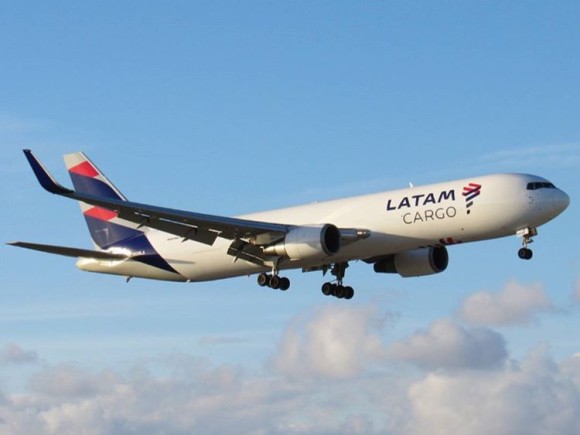The challenge of ensuring aircraft are full of cargo is not an easy one to meet at the best of times, but when the market is in a downturn the task becomes even more difficult.
One person meeting this challenge head on is LATAM Cargo chief executive Andrés Bianchi, who was appointed to the top job just over two and a half years ago after stints in the finance, networks and commercial areas of the cargo business.
He outlines to Air Cargo News the steps the airline has taken to ensure its load factors are as high as possible on both northbound and southbound services.
Widebody capacity
Firstly, he says, the cargo division works closely with the passenger side of the business when network plans are formulated to ensure widebody capacity is deployed in order to maximise cargo loads.
“For example, we fly widebodies from Santiago to São Paulo anything between two to four times per day, or from Lima to São Paulo,” he says.
“Those aircraft are basically devoted to those routes because of cargo requests. It allows us to feed our belly capacity out of São Paulo into Europe and the US with a much better cargo contribution.
“That is something we are consistently getting better at.”
Its fleet of 11 Boeing 767 freighters also help to feed cargo into its main hubs for onward transportation in the bellyhold of passenger aircraft.
Bianchi explains that rather than fly back and forth between two airports on a rotation, freighters will cover more than one origin and hub on a loop to pick up and drop off as much feeder cargo as possible without the need to fly low-demand backhaul routes.
“By combining, we can do a much better job at building the cargo out of the exporting countries of South America without having to bring an extra plane back.”
Overall, Bianchi says the last 12 months have been a mixed bag in terms of demand, with perishable cargo heading northbound largely performing “fairly well”, while southbound imports have been “dismal”.
He says: “Salmon is okay, flowers are okay but asparagus, which used to be pretty significant, is not doing that well because there have been trials of surface transport, although the results of this are still a bit unclear.
“On the other hand the import markets are dismal when you look at data from sources like [analysts] WorldACD or Seabury.
“The decline in revenues on the import side is among the most dramatic in the world, especially on some specific lanes in which, because we are still a good export market, carriers are flying more and then lowering the rate in order to get more tonnage on the way down.
“That is generating an imbalance, it is generating a lot of issues within the region in terms of how you deploy capacity and how you leverage your network to carry as much northbound volumes as possible without having to incur the cost of bringing freighters down.”
Divergent picture
Looking at how LATAM Cargo is performing in terms of volumes and revenues paints a divergent picture, as income has been hit much harder than cargo demand.
Over the first three quarters of last year, the latest figures available, the cargo business saw revenues decline by 10.3% year on year to $784m, while cargo volumes were down by the lower amount of 3.5% to 660,000 tons.
Bianchi points out that the figures are complicated by the sale of its Mexican subsidiary Mas Air Cargo at the end of 2018…



